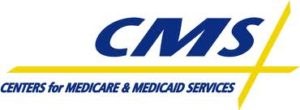SNAP Rallies PA Delegation to Oppose Proposed Medicaid Fiscal Accountability Regulation (Letter)
SNAP asks members of Pennsylvania’s congressional delegation to sign onto a bipartisan letter written by delegation members Brendan Boyle (D) and Mike Kelly (R) asking the Centers for Medicare & Medicaid Services Administration to reconsider a proposed regulation that could limit the state’s ability to finance its share of its Medicaid spending and appropriately reimburse providers of high volumes of Medicaid-covered services.
 Governor’s Order Closing State Businesses
Governor’s Order Closing State Businesses Pennsylvania Department of Human Services Shares COVID Response Overview
Pennsylvania Department of Human Services Shares COVID Response Overview The following summary of PA legislative actions was compiled by Cynthia Fernandez of Spotlight PA and Gillian McGoldrick of Lancaster Online.
The following summary of PA legislative actions was compiled by Cynthia Fernandez of Spotlight PA and Gillian McGoldrick of Lancaster Online. CMS Catastrophic Plan Coverage Guidance
CMS Catastrophic Plan Coverage Guidance  PACE Prescription Drug Program
PACE Prescription Drug Program  Infection Control
Infection Control New Guidance From the State
New Guidance From the State Among the issues addressed in the FAQ are eligibility, enrollment, benefits, cost sharing, workforce issues, telehealth, and more. Health care providers may find this information useful when serving their patients.
Among the issues addressed in the FAQ are eligibility, enrollment, benefits, cost sharing, workforce issues, telehealth, and more. Health care providers may find this information useful when serving their patients. The insurers – Aetna, Capital Blue Cross, Cigna, Geisinger, Highmark, Independence Blue Cross, Pennsylvania Health & Wellness, United Healthcare, and UPMC Health Plan – will cover such tests when they are medically ordered and performed by approved medical labs.
The insurers – Aetna, Capital Blue Cross, Cigna, Geisinger, Highmark, Independence Blue Cross, Pennsylvania Health & Wellness, United Healthcare, and UPMC Health Plan – will cover such tests when they are medically ordered and performed by approved medical labs. The February 2020 MACPAC meeting opened with a continuation of MACPAC’s examination of Medicaid’s role in maternal health, when Medicaid officials from Michigan, New Jersey, and North Carolina joined the Commission to discuss how their states are addressing maternal morbidity and mortality.* The Commission plans to include a chapter on maternal health in its June 2020 report to Congress. Commissioners later turned their attention to policy options for improving enrollment in the Medicare Savings Program.
The February 2020 MACPAC meeting opened with a continuation of MACPAC’s examination of Medicaid’s role in maternal health, when Medicaid officials from Michigan, New Jersey, and North Carolina joined the Commission to discuss how their states are addressing maternal morbidity and mortality.* The Commission plans to include a chapter on maternal health in its June 2020 report to Congress. Commissioners later turned their attention to policy options for improving enrollment in the Medicare Savings Program. Included in this month’s edition are articles about:
Included in this month’s edition are articles about: The regulation, proposed by the Centers for Medicare & Medicaid Services in November would impose new limits on the ability of states to finance their share of their Medicaid spending, potentially jeopardizing provider payments and the ability of high-volume Medicaid providers to operate without suffering great losses.
The regulation, proposed by the Centers for Medicare & Medicaid Services in November would impose new limits on the ability of states to finance their share of their Medicaid spending, potentially jeopardizing provider payments and the ability of high-volume Medicaid providers to operate without suffering great losses.